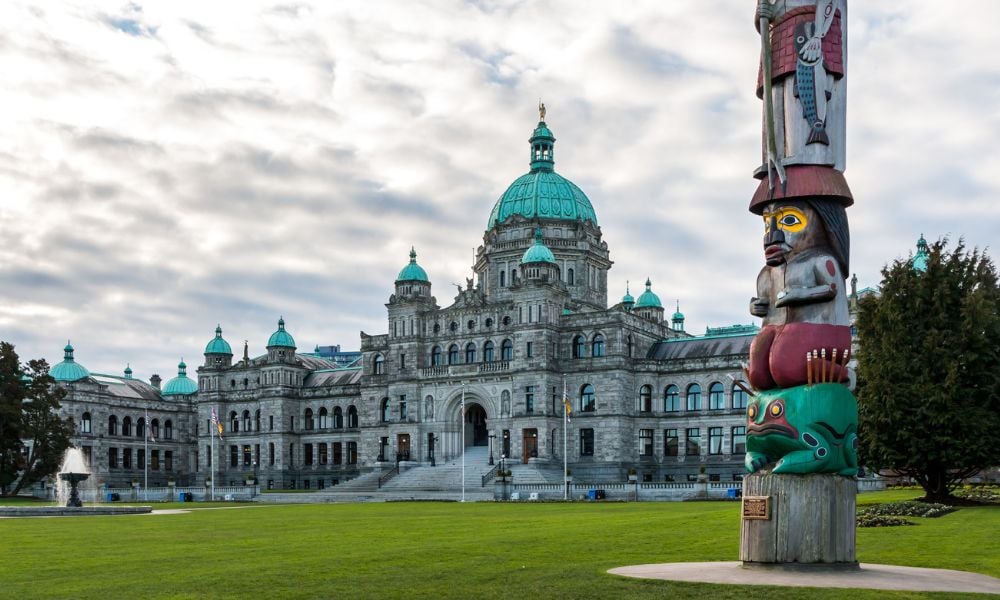The concept of “cumulative impacts” in environmental assessments is the latest milestone as consent and collaboration requirements evolve in project development, say lawyers advising energy sector players on Indigenous consultation.
In June 2021, the BC Superior Court released its decision in Yahey v. British Columbia, 2021 BCSC 1287. The case involved Blueberry River First Nations, who claimed that the Crown, represented by the Province of British Columbia, had suffocated the meaningful exercise of their treaty rights through the cumulative impact of authorized industrial development. Blueberry River adhered to Treaty 8 in 1900. The treaty protects their rights to hunt, trap, and fish in the covered territory.
The court recognized that the province could “take up” lands for industrial development. Still, it noted that this power must be exercised only in a way that upholds Treaty 8’s promises and protections. The court found that the province breached the treaty by allowing development “at an extensive scale without assessing the cumulative impacts” and ensuring the First Nation could exercise its rights.
 “Clients are very interested in what’s going on in BC – and impacted by it,” says Laura Estep, a partner in Dentons Canada LLP’s energy regulatory practice group in Calgary.
“Clients are very interested in what’s going on in BC – and impacted by it,” says Laura Estep, a partner in Dentons Canada LLP’s energy regulatory practice group in Calgary.
The BC government did not appeal the decision in Yahey but began negotiating with Blueberry River and other Treaty 8 First Nations. “After a long period of regulatory standstill, agreements were finally reached in January 2023,” says Estep. The agreements limit new petroleum and natural gas development and create disturbance caps, fees, and setbacks.
Similar claims related to cumulative impacts have been filed in Alberta, Saskatchewan, and Ontario. Estep expects Alberta will likely be in a better position to defend the claims in its jurisdiction because the province’s application process already considers cumulative effects, and the Alberta Energy Regulator has expressed caution or even denied projects because of the volume of development in an area. That was not the case in BC. In Yahey, concerns Blueberry River had consistently raised for over a decade had not caused the regulator to deny any projects.
 The Yahey case highlights a trend, says Gavin Fitch, a Calgary partner at McLennan Ross LLP whose work involves environmental, regulatory, energy-permitting, and Indigenous law. Though still not legally required, it is increasingly desirable for energy-project proponents to obtain the consent of First Nations by entering into agreements whereby they become a partner in the project.
The Yahey case highlights a trend, says Gavin Fitch, a Calgary partner at McLennan Ross LLP whose work involves environmental, regulatory, energy-permitting, and Indigenous law. Though still not legally required, it is increasingly desirable for energy-project proponents to obtain the consent of First Nations by entering into agreements whereby they become a partner in the project.
This trajectory leads back to 2005, when the Supreme Court of Canada handed down Mikisew Cree First Nation v. Canada (Minister of Canadian Heritage), a decision with which the SCC first developed the duty to consult, he says. The court confirmed that governments have the power under treaties with First Nations to authorize the use of land that will infringe on treaty rights, but also that governments have the duty to consult with First Nations that will be impacted.
Two years after Mikisew, the United Nations passed the United Nations Declaration on the Rights of Indigenous Peoples (UNDRIP). In Mikisew, the court was clear that the government was not required to obtain consent from the impacted First Nation when contemplating authorizing an activity that would impact Aboriginal rights. But UNDRIP includes a section that says governments should get “the free, prior, and informed consent” of First Nations before allowing development that would infringe their rights.
 Robert Freedman, a partner in Gowling WLG (Canada) LLP’s Vancouver office who practises Indigenous and environmental law, says that while UNDRIP is not in force in Canada, it is influential. The BC and federal governments have passed legislation to implement action plans to achieve UNDRIP’s objectives.
Robert Freedman, a partner in Gowling WLG (Canada) LLP’s Vancouver office who practises Indigenous and environmental law, says that while UNDRIP is not in force in Canada, it is influential. The BC and federal governments have passed legislation to implement action plans to achieve UNDRIP’s objectives.
Section 35 of the Constitution Act, 1982 states: “The existing aboriginal and treaty rights of the aboriginal peoples of Canada are hereby recognized and affirmed.” When Freedman was called to the BC Bar in 1994, the first cases emerged from the courts about how to interpret s. 35. He says that lawyers and Indigenous groups worked to define the nature of those rights because the Constitution did not define them.
“Largely, we had government and industry who took a very narrow, negative view of rights,” says Freedman. “Their view was that there was very little to talk about with First Nations, certainly nothing much financial. There was no thought of partnerships. And a lot of our work was around defining the rights and trying to define consultation with people who didn’t want to do it.”
The years since have brought much case law, “somewhat” more open-minded governments, and, on the industry side, the slow evolution from a “completely antagonistic relationship” to “much more willingness to collaborate.”
For the last 15–20 years, there has been tension between whether only consultation is required for industrial projects impacting Aboriginal rights and whether project proponents need First Nations’ consent, says Fitch. “The playing field is still fluid. Things are continuing to change. But overall, the direction is definitely towards you’ve got to get the First Nations onside.
“If you don’t have all the First Nations on board, you’re running a pretty high risk that your project could go sideways. So, it’s a very interesting moment we’re in.”
The Yahey judgment means that, at least in BC, regulatory reviews must be mindful of cumulative impacts, and any decision on a process that lacks that analysis is at risk, says Freedman. He adds that “everyone,” including himself, refers to Yahey in every other jurisdiction in Canada, but the concept of cumulative impacts remains widely misunderstood. “I don’t think it’s properly being applied anywhere, including in BC where it’s binding,” he says.
 Bernie Roth is a partner in Dentons’ energy regulation practice group in Calgary. He has acted on several significant projects, including pipeline projects, on which potential impacts on treaty rights have resulted in delays. Now, as Canada forges ahead toward a future with net-zero greenhouse gas emissions, he says the same regulatory uncertainty will persist in the transition, with all the electrification that will be required.
Bernie Roth is a partner in Dentons’ energy regulation practice group in Calgary. He has acted on several significant projects, including pipeline projects, on which potential impacts on treaty rights have resulted in delays. Now, as Canada forges ahead toward a future with net-zero greenhouse gas emissions, he says the same regulatory uncertainty will persist in the transition, with all the electrification that will be required.
“Making Indigenous groups partners in these projects, that’s a way to overcome opposition to the projects,” says Roth.





